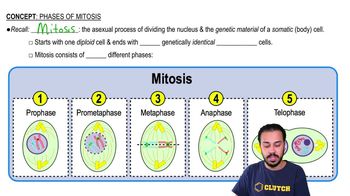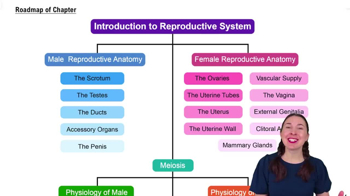Multiple Choice
Which part of the uterine tube is responsible for capturing the ovulated oocyte from the ovary?
60
views
 Verified step by step guidance
Verified step by step guidance Verified video answer for a similar problem:
Verified video answer for a similar problem:



 2:24m
2:24mMaster Roadmap of Chapter with a bite sized video explanation from Bruce Bryan
Start learning